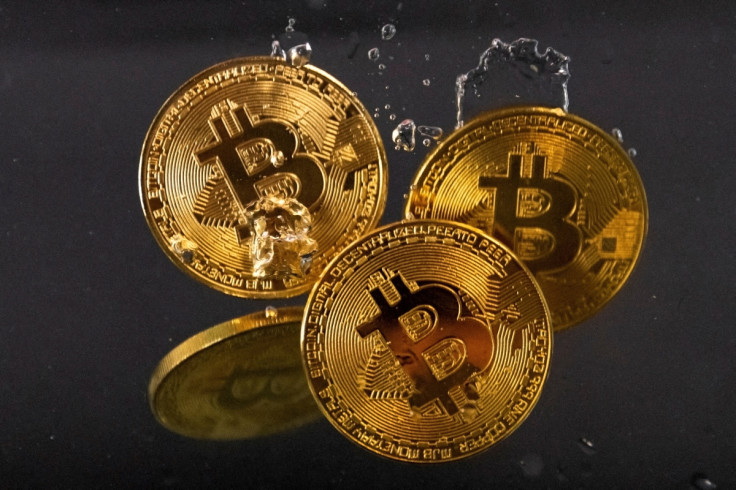Ex-Alameda Research Engineer Reveals Untold Story Behind 2021 Flash Crash, And It's Not In The News

KEY POINTS
- On Oct. 21, 2021, the price of Bitcoin on Binance.US briefly crashed 87%
- The flash crash was credited to a 'bug' in the trading platform of one of Binance.US' institutional customers
- At the time, Bitcoin's price nosedived from approximately $65,760 to as low as $8,200
After his previous exposé on the inner workings of the now-bankrupt crypto empire FTX Group and the grand vision of the now-disgraced crypto mogul Sam Bankman-Fried, Aditya Baradwaj, who used to work as an engineer at the crypto hedge fund Alameda Research, is back putting out skeletons in the closet of his former employer. This time, the revelations center on the 2021 market flash crash that sent the $65,000 trading price of Bitcoin to just $8,000.
On Oct. 21, 2021, the price of Bitcoin on Binance.US briefly crashed 87% and then immediately recovered, which the crypto exchange platform credited to a "bug" in the trading platform of one of its institutional customers.
At the time, Bitcoin's price nosedived from approximately $65,760 to as low as $8,200 and then bounced back to nearly exactly where it was trading before. The incident was a real flash crash and sent traders scrambling to figure out what was going on.
"One of our institutional traders indicated to us that they had a bug in their trading algorithm, which appears to have caused the sell-off," a Binance.US spokesperson said at the time, adding, "We are continuing to look into the event, but understand from the trader that they have now fixed their bug and that the issue appears to have been resolved."
That was the story peddled by several news outlets at the time. But Baradwaj, who worked as an engineer at Alameda Research between September 2021 and November 2022, has a different story to tell and a far more interesting one.
According to him, the cause of the flash crash was a "fat finger" at Alameda Research, who was at the time using the company's manual trading system to sell a block of Bitcoin but missed the decimal point and instead of selling the crypto asset at its current market price, sold it "for pennies on the dollar."
"The trader was trying to sell a block of BTC in response to news, and sent out the order via our manual trading system," the former engineer at Alameda Research revealed, adding, "What they missed was the decimal point was off by a few spaces. Rather than selling BTC at the current market price, they sold it for pennies on the dollar."
Alameda's losses because of the "fat finger" incident "were staggering - on the order of tens of millions," Baradwaj revealed, but he explained that since it was an "honest mistake," the crypto business simply implemented extra sanity checks for manual trades.
PART 2: THE FAT-FINGER
— Adi (e/acc) (@aditya_baradwaj) September 20, 2023
or
The story of how a misplaced decimal point at Alameda Research caused a market crash that echoed around the world.
(1/n) 🧵#SBF #FTX pic.twitter.com/jCykh6rg1o
The engineer's latest exposé underlined how Bankman-Fried and his inner circle ran the multi-billion dollar group of companies to which people entrusted their savings.
"That's usually how things worked at Alameda - we would wait until something broke, and then rush to fix it," Baradwaj disclosed, noting, "Which is why it took us so long to implement sanity checks that any 'traditional' trading firm would have never started trading without."
He also said that despite the staggering amount of losses, "it was back to business as usual" after the incident. Baradwaj recalled what Bankman-Fried previously told his team about "the utility we gained by moving fast outweighed the occasional costs we paid due to poor risk checks, hacks, and the like," and underlined that this was the crypto mogul's "work philosophy" that "drove the culture he created at Alameda and FTX."
Baradwaj also shared that Alameda's trading, at a high level, operated in two modes: the semi-systematic strategies and automated trading systems, although once in a while, a trader "manually sends a trade."
"The main one was our semi-systematic strategies, where traders set model parameters that control a complex automated trading system. This way, traders aren't placing actual trades, but rather fine-tuning an algorithm that decides how to execute the trades at high frequency," he said.
"Our automated systems handled the vast majority of Alameda's trading. So naturally, we had sanity checks in place to make sure that the orders being sent were reasonable relative to current market prices," he added.
Baradwaj further said that the team would resort to using the manual trading system if their automated trading systems were buggy due to market volatility, or if there was an arbitrage opportunity on a venue where we hadn't set up automated trading yet."
Nearly two years after the "fat finger" incident at Alameda Research, things changed. Its former CEO, Caroline Ellison, is currently working with government prosecutors and might be called to testify against his former boss and lover, Bankman-Fried, in his upcoming criminal trial in October.
Bankman-Fried is accused of several charges and is currently detained in New York after his bail was revoked because of alleged witness tampering. His parents, Allan Joseph Bankman and Barbara Fried, were sued by FTX and accused of using their influence to enrich themselves, as well as misappropriating funds.
© Copyright IBTimes 2025. All rights reserved.






















